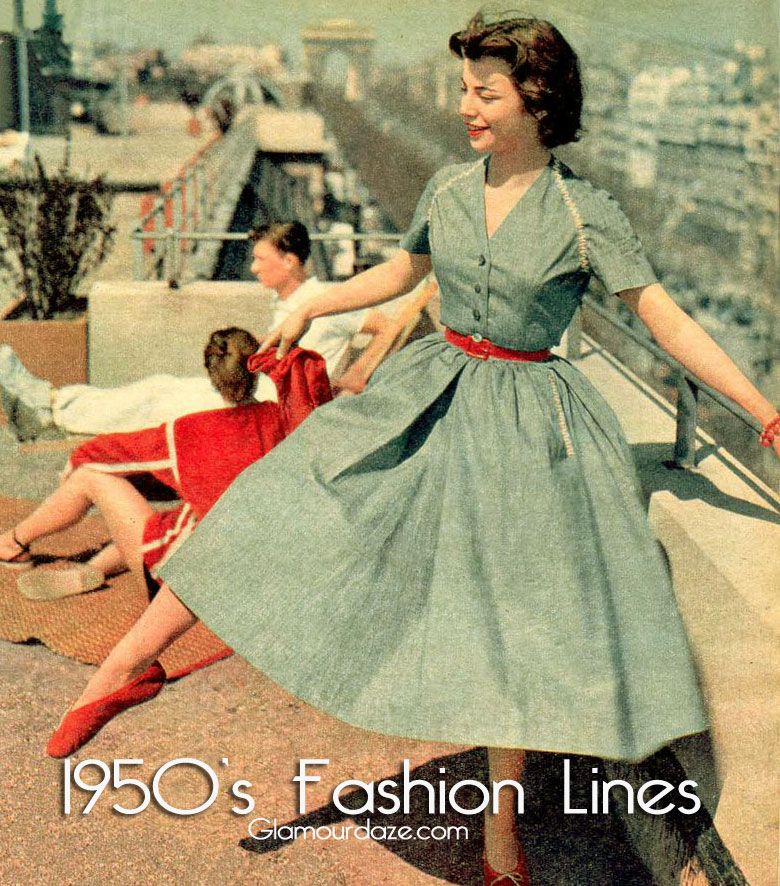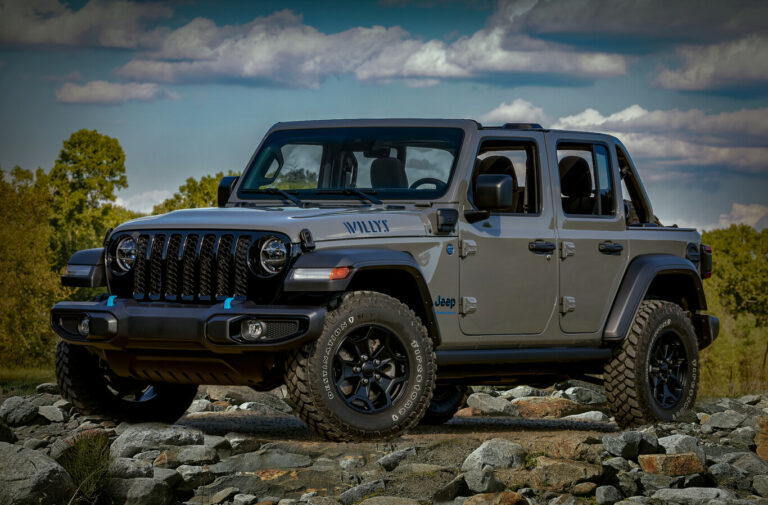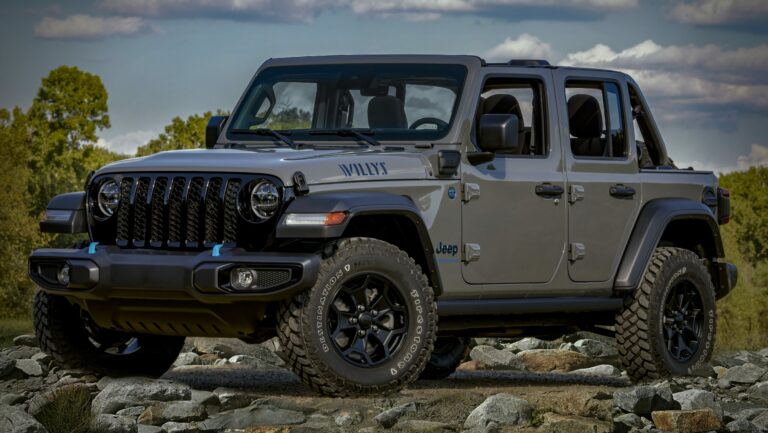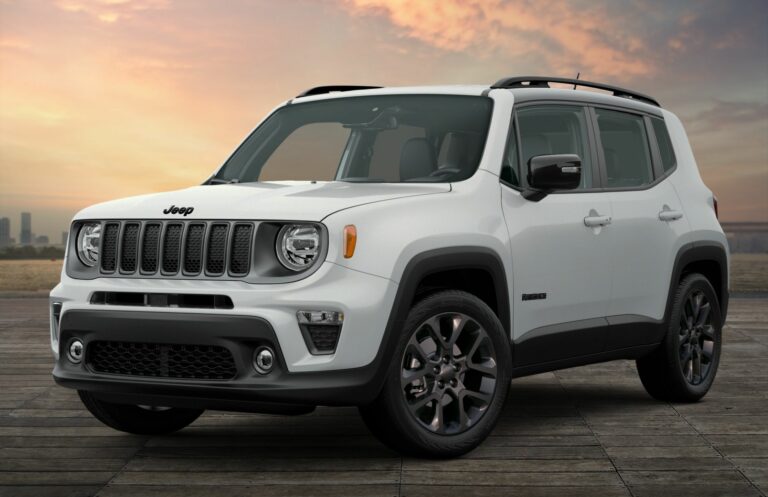1950 Willys Jeep Truck For Sale: A Comprehensive Buyer’s Guide
1950 Willys Jeep Truck For Sale: A Comprehensive Buyer’s Guide jeeps.truckstrend.com
Introduction: The Enduring Allure of a Post-War Icon
In the vast landscape of classic American vehicles, few command the immediate recognition and nostalgic affection quite like the Willys Jeep Truck. Born from the rugged DNA of the iconic military MB/GPW, the civilian Willys-Overland utility vehicles quickly cemented their place in the post-war American landscape, aiding in farming, construction, and everyday utility. Among these, the 1950 Willys Jeep Truck stands out as a charming and robust workhorse, embodying an era of simplicity, durability, and quintessential American ingenuity.
1950 Willys Jeep Truck For Sale: A Comprehensive Buyer’s Guide
For enthusiasts, collectors, and those seeking a unique piece of automotive history, the prospect of finding a 1950 Willys Jeep Truck for sale is an exciting journey. These vehicles are more than just metal and mechanics; they are tangible links to a bygone era, offering a driving experience unlike anything modern. Whether you’re looking for a challenging restoration project, a reliable weekend driver, or a show-stopping fully restored classic, understanding what to look for and expect is paramount. This comprehensive guide will navigate you through the various facets of acquiring, evaluating, and appreciating the timeless 1950 Willys Jeep Truck.
A Glimpse into History: The 1950 Willys Jeep Truck’s Genesis
Following World War II, Willys-Overland faced the challenge of transitioning its highly successful military Jeep production into the civilian market. The answer came in the form of versatile utility vehicles, including the Willys Wagon, Willys Sedan Delivery, and crucially, the Willys Truck. Introduced in 1947, the Willys Truck shared many components with its Wagon sibling, including the sturdy "Go-Devil" flathead four-cylinder engine and the robust 4×4 drivetrain.
By 1950, the Willys Truck had evolved slightly, maintaining its distinctive upright grille, separate fenders, and utilitarian design. It was marketed as a vehicle capable of tackling tough jobs, whether on the farm, at a construction site, or delivering goods in rural areas. Its legendary four-wheel-drive system made it a formidable competitor to other trucks of the era, particularly in challenging terrain. The 1950 model year represents a sweet spot for many collectors, offering the classic post-war Willys aesthetic combined with readily available parts and a relatively straightforward mechanical design.
Why the 1950 Willys Jeep Truck Still Captivates Buyers
The appeal of the 1950 Willys Jeep Truck extends far beyond mere transportation. It’s a vehicle that evokes a sense of nostalgia, adventure, and raw functionality. Here are some reasons why these trucks continue to be highly sought after:
- Iconic Design: Its rugged, no-nonsense appearance is instantly recognizable and embodies a classic American utility aesthetic.
- Historical Significance: Owning one is owning a piece of post-war American industrial history, a testament to resilience and innovation.
- Off-Road Prowess: Even in stock form, the Willys 4×4 system is incredibly capable, making it ideal for light off-roading, farm work, or simply navigating challenging weather conditions.
- Mechanical Simplicity: With a basic flathead engine and manual transmission, these trucks are relatively easy to understand, maintain, and repair for the mechanically inclined.
- Strong Community: A vibrant community of Willys enthusiasts exists, offering a wealth of knowledge, support, and camaraderie.
- Investment Potential: Well-maintained or expertly restored examples can appreciate in value, making them not just a hobby but also a potential asset.


Dissecting the 1950 Willys Jeep Truck: Key Specifications and Features
Understanding the core components of a 1950 Willys Jeep Truck is essential for any potential buyer.
- Engine: The most common engine found in the 1950 Willys Truck is the L-134 "Go-Devil" flathead four-cylinder. This engine, rated at approximately 60 horsepower, is renowned for its low-end torque and bulletproof reliability. While not fast, it’s incredibly durable and easy to work on. Some later models or swapped trucks might feature the "Hurricane" F-134 overhead-valve four-cylinder or even V6/V8 conversions, which significantly alter the vehicle’s character and originality.
- Transmission: Typically, these trucks came with a Borg-Warner T-90 3-speed manual transmission, known for its robustness.
- Transfer Case: A Spicer 18 transfer case with high and low range, providing excellent off-road capability.
- Axles: Dana 25 front axle and Dana 44 rear axle, both known for their strength.
- Suspension: Solid axles with leaf springs all around, providing a robust but somewhat stiff ride.
- Brakes: Four-wheel drum brakes were standard. Power brakes were not an option.
- Electrical System: Originally a 6-volt positive ground system. Many have been converted to 12-volt negative ground for easier starting and accessory compatibility.
- Body Styles: Primarily available as a two-door pickup truck, with variations in bed length and stake-side options.
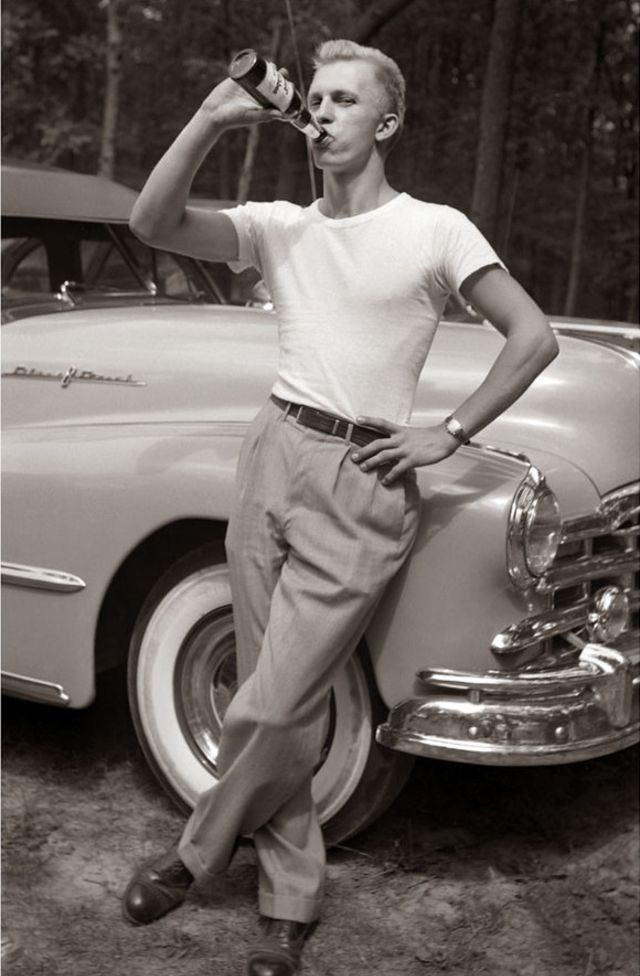
The Hunt Begins: What to Inspect Before You Buy
Acquiring a vintage vehicle like a 1950 Willys Jeep Truck requires a thorough inspection. Don’t rush the process, and ideally, bring someone knowledgeable about old Jeeps.
- Rust: The Ultimate Killer: This is the most critical area. Check:
- Frame: Pay close attention to the main rails, crossmembers, and body mounts. Repairs to the frame are costly and can compromise safety.
- Body Panels: Look at the floorboards, rocker panels, cab corners, fender wells, and especially the bed floor and sides. Water tends to collect in certain areas.
- Mounting Points: Check where the suspension, engine, and steering components attach to the frame.
- Drivetrain Condition:
- Engine: Listen for unusual noises (knocks, taps), look for excessive smoke from the exhaust (blue for oil, black for rich fuel, white for coolant), and check for oil or coolant leaks. Check oil pressure.
- Transmission & Transfer Case: Test all gears, including reverse and 4×4 high/low. Listen for grinding or difficulty shifting. Check for leaks.
- Axles: Look for leaks at the differential covers and wheel hubs. Listen for humming or clunking during a test drive.
- Brakes and Steering:
- Brakes: Ensure the pedal feels firm and the truck stops straight. Inspect lines, cylinders, and drums for leaks or excessive wear.
- Steering: Check for excessive play in the steering wheel. Look for worn tie rod ends, kingpins, and steering box leaks.
- Electrical System: Verify all lights, gauges, wipers, and horn function. If it’s still 6-volt, ensure it starts reliably. If converted to 12-volt, ensure the conversion was done professionally.
- Interior and Glass: Check the condition of the seat upholstery, door panels, and headliner. Ensure all windows roll up and down, and there are no significant cracks in the glass.
- Documentation: Always verify the title matches the VIN and is clear of any liens. Service records, if available, are a huge bonus.
Understanding Value: Condition and Restoration Levels
The price of a 1950 Willys Jeep Truck can vary wildly depending on its condition and the level of restoration it has undergone.
- Parts Truck / Project Vehicle: These are typically non-running or require extensive structural and mechanical work. They are often missing parts. Value is low, but the investment in time and money will be significant.
- Driver Quality: These trucks are complete and functional, capable of being driven, but may have cosmetic flaws (dents, faded paint, torn interior) or minor mechanical issues that need attention. They are ideal for someone who wants to enjoy the truck immediately and perhaps restore it gradually.
- Partial Restoration: The vehicle has undergone significant work on certain systems (e.g., rebuilt engine, new paint) but may still have original, unrestored components or minor flaws.
- Show Quality / Frame-Off Restoration: These trucks have been meticulously restored to original or better-than-original condition, often with every nut and bolt addressed. They command the highest prices and are typically found in concours events or high-end classic car collections.
Navigating the Purchase: Practical Advice for Buyers
- Where to Find Them: Look on specialized classic car websites (e.g., Hemmings, ClassicCars.com), online auction sites (eBay, Bring a Trailer), classic car dealerships, Willys-specific forums and clubs, and local classifieds.
- Pre-Purchase Inspection (PPI): Even if you’re mechanically inclined, it’s highly recommended to get an independent mechanic specializing in vintage vehicles to perform a PPI. They can spot issues you might miss.
- Negotiation: Do your research on recent sales of similar condition trucks. Be prepared to negotiate, especially if you find issues during your inspection.
- Logistics: Factor in the cost of transportation if the truck isn’t local. Also, arrange for appropriate classic car insurance before you pick it up.
Life with a Legend: Ownership and Maintenance
Owning a 1950 Willys Jeep Truck is a unique experience. Be prepared for:
- Parts Availability: Mechanical parts (engine, transmission, axles, brakes) are surprisingly well-supported by aftermarket suppliers and specialist vendors. Body panels and specific trim pieces can be harder to find and more expensive.
- Driving Experience: These trucks are slow, loud, and lack modern amenities like power steering, power brakes, or air conditioning. The ride can be stiff. They are not highway cruisers but excel at lower speeds and off-road. Embrace the vintage charm!
- Common Issues: Leaky seals, electrical gremlins (especially with 6V systems), and worn suspension components are common but generally manageable.
- Maintenance: Regular oil changes, lubrication of chassis components, and checking fluid levels are crucial. These trucks respond well to consistent, preventative maintenance.
Price Guide: 1950 Willys Jeep Truck (Estimated Ranges)
Please note that these are approximate ranges and actual prices can vary significantly based on location, specific features, originality, and market demand.
| Condition Category | Estimated Price Range (USD) | Description |
|---|---|---|
| Project / Parts Truck | $3,000 – $8,000 | Non-running, significant rust, missing components, extensive mechanical/body work required. Suitable for experienced restorers or as a parts donor. |
| Driver Quality | $9,000 – $20,000 | Runs and drives, roadworthy, but may have cosmetic flaws (faded paint, dents, interior wear) or minor mechanical issues. Good for regular enjoyment with potential for gradual improvement. |
| Partially Restored | $21,000 – $35,000 | Significant mechanical or cosmetic work completed (e.g., rebuilt engine, new paint, updated brakes), but not a full frame-off restoration. Presents well and is generally reliable. |
| Fully Restored / Show | $36,000 – $60,000+ | Meticulously restored to original specifications or better. Excellent paint, pristine interior, fully rebuilt mechanicals, often a frame-off restoration. Suitable for shows or discerning collectors. |
Frequently Asked Questions (FAQ) about the 1950 Willys Jeep Truck
Q1: Are parts difficult to find for a 1950 Willys Jeep Truck?
A1: Mechanical parts (engine, transmission, transfer case, axles, brakes, electrical components) are surprisingly available from specialist suppliers and general classic car parts vendors. Body panels and specific trim items can be harder to source but are not impossible.
Q2: Can a 1950 Willys Jeep Truck be a daily driver?
A2: While technically possible, it’s generally not recommended for modern daily driving. They lack modern safety features, are slow, noisy, and uncomfortable for long trips. They are best suited for recreational use, short errands, or off-road adventures.
Q3: Is a 1950 Willys Jeep Truck a good investment?
A3: Well-maintained or professionally restored examples can certainly appreciate in value, especially given their iconic status. However, like any classic vehicle, the "investment" aspect should be secondary to the enjoyment of ownership. Project trucks can quickly become money pits if not carefully managed.
Q4: What’s the fuel economy like?
A4: Don’t expect great fuel economy. The L-134 engine, combined with the truck’s weight and basic design, typically yields around 12-18 miles per gallon, depending on driving conditions and maintenance.
Q5: Is it safe to drive a 1950 Willys Jeep Truck on modern roads?
A5: They lack modern safety features like airbags, crumple zones, or anti-lock brakes. Their drum brakes require more stopping distance, and the steering can be vague. Drive defensively, be aware of your surroundings, and avoid high-speed highways if possible. Many owners upgrade lighting and add turn signals for better visibility.
Q6: Should I look for a 6-volt or 12-volt system?
A6: Original 6-volt systems can be quirky and require specific knowledge. Many owners convert to 12-volt for easier starting, brighter lights, and compatibility with modern accessories (radio, phone charger). A professionally done 12-volt conversion is generally a positive feature.
Conclusion: Embracing the Legacy of the 1950 Willys Jeep Truck
The 1950 Willys Jeep Truck for sale represents a unique opportunity to own a tangible piece of automotive history. Its rugged charm, mechanical simplicity, and undeniable character make it a beloved classic. While acquiring and maintaining one requires careful consideration and a degree of commitment, the rewards of driving and preserving such an iconic vehicle are immense. Whether you envision it as a weekend trail rig, a showpiece, or a functional farm truck, the 1950 Willys Jeep Truck offers an authentic, unadulterated driving experience that connects you directly to the post-war American spirit. For those willing to embrace its vintage quirks, it promises years of enjoyment and a timeless connection to a legendary era of utility and adventure.

